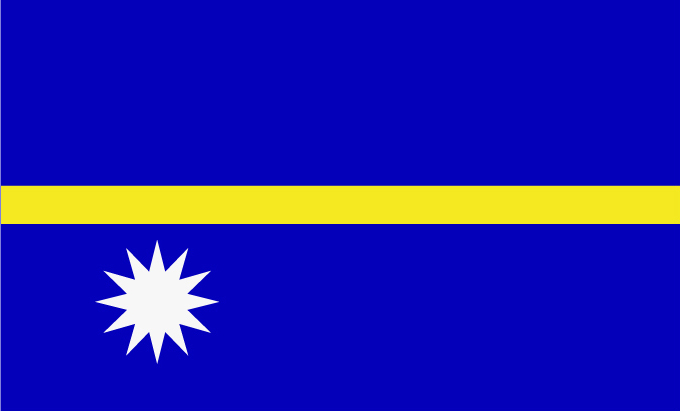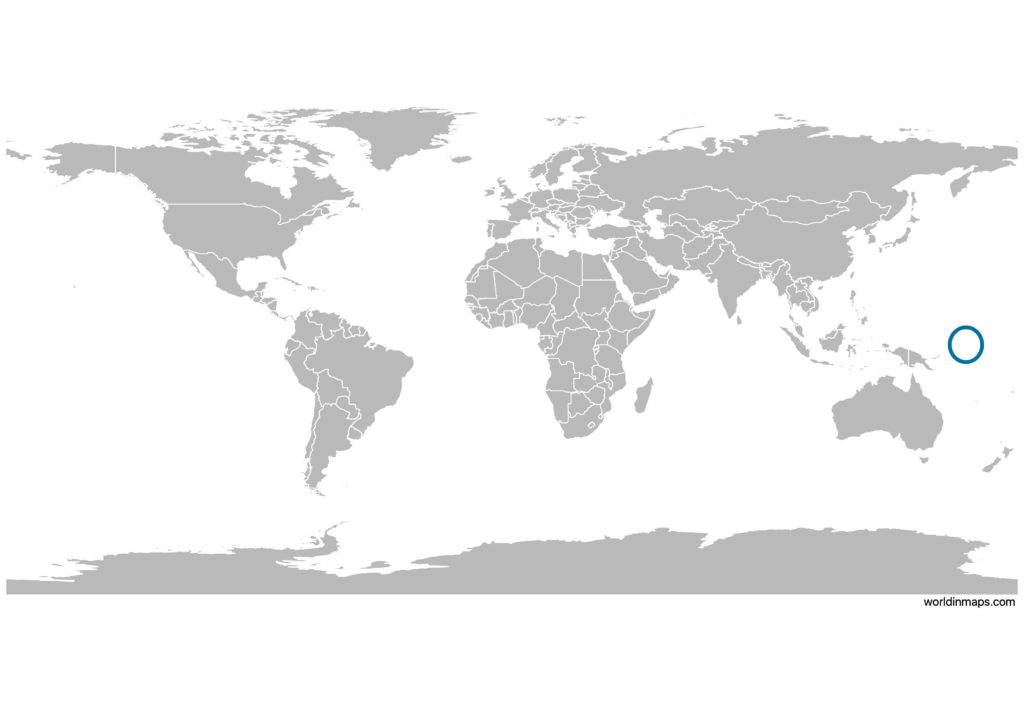Nauru

| Government | |
| Name | Republic of Nauru |
| Nauruan | Repubrikin Naoero |
| Government type | parliamentary republic |
| Capital | no official capital (government offices in the Yaren District) |
| Currency | Australian dollar (AUD) |
| Organization | |
| Member State | Commonwealth of Nations |
| People | |
| Population (2020) | 10,834 (228th) |
| Density of population | 480 P/km2 (12th) |
| Nationality | Nauruan |
| Official languages | |
| Nauruan | |
| English | |
| Ethnic groups (2007) | |
| Nauruan | 88.9% |
| Part Nauruan | 6.6% |
| I-Kiribati | 2% |
| Other | 2.5% |
| Religions (2011) | |
| Protestant | 60.4% |
| Nauru Congregational | 35.7% |
| Assembly of God | 13% |
| Nauru Independent Church | 9.5% |
| Baptist | 1.5% |
| Seventh Day Adventist | 0.7% |
| Roman Catholic | 33% |
| other | 3.7% |
| none | 1.8% |
| unspecified | 1.1% |
| Life expectancy (2020) | |
| Male | 64.3 years |
| Female | 71.9 years |
| Total population | 68.4 years (175th) |
| Homicides | |
| n.a. | |
| Geography | |
| Land area | 21 km2 |
| water area | 0 km2 |
| total area | 21 km2 |
| Lowest point | |
| Pacific Ocean | 0 m |
| Highest point | |
| Command Ridge | 70 m |
| Land use (2011) | |
| Agricultural land | 20% |
| Arable land | 0% |
| Permanent crops | 20% |
| Permanent pasture | 0% |
| Forest | 0% |
| Other | 80% |
| Urbanization | |
| Urban population (2020) | 100% |
| Rate of urbanization | -0.06% annual rate of change (2015 – 2020) |
| Economy | |
| Labor force | NA |
| Labor force by occupation | |
| Most of the labor force is employed in phosphate mining, public administration, education, and transportation | |
| Unemployment rate (2011) | 23% (193rd) |
| GDP (PPP) (estimate 2017) | |
| Total | $160 million (192nd) |
| Per capita | $12,052 (94th) |
| GDP (nominal) (estimate 2017) | |
| Total | $114 million |
| Per capita | $8,570 |
| GDP by sector (estimate 2009) | |
| Agriculture | 6.1% |
| Industry | 33% |
| Services | 60.8% |
| Exports (2013) | $125 million (194th) |
| Exports partners (2017) | |
| Nigeria | 38.6% |
| Japan | 16.6% |
| Australia | 15.9% |
| South Korea | 13.7% |
| NZ | 5.7% |
| Imports (2016) | $64.9 million (219th) |
| Imports partners (2017) | |
| Australia | 67.5% |
| Fiji | 9.2% |
| India | 8.1% |
| Singapore | 5.4% |
Nauru on the world map

Demography
Age structure data
Estimate for 2020:
- 0-14 years: 30.87% (male 1,337/female 1,684)
- 15-24 years: 16.35% (male 734/female 866)
- 25-54 years: 42.57% (male 2,115/female 2,050)
- 55-64 years: 6.72% (male 262/female 396)
- 65 years and over: 3.48% (male 122/female 219)
Remark: the age structure of a population affects a nation’s key socioeconomic issues. Countries with young populations (high percentage under age 15) need to invest more in schools, while countries with older populations (high percentage ages 65 and over) need to invest more in the health sector. The age structure can also be used to help predict potential political issues. For example, the rapid growth of a young adult population unable to find employment can lead to unrest.
Population from 1950 to 2020
Source: United Nations, Department of Economic and Social Affairs, Population Division (2019). World Population Prospects 2019, Online Edition. Rev. 1.
Economy
Agriculture:
coconuts
Industries:
phosphate mining, offshore banking, coconut products
Exports – commodities:
phosphates
Imports – commodities:
food, fuel, manufactures, building materials, machinery
Time zone and current time in Nauru
Go to our interactive map to get the current time in Nauru